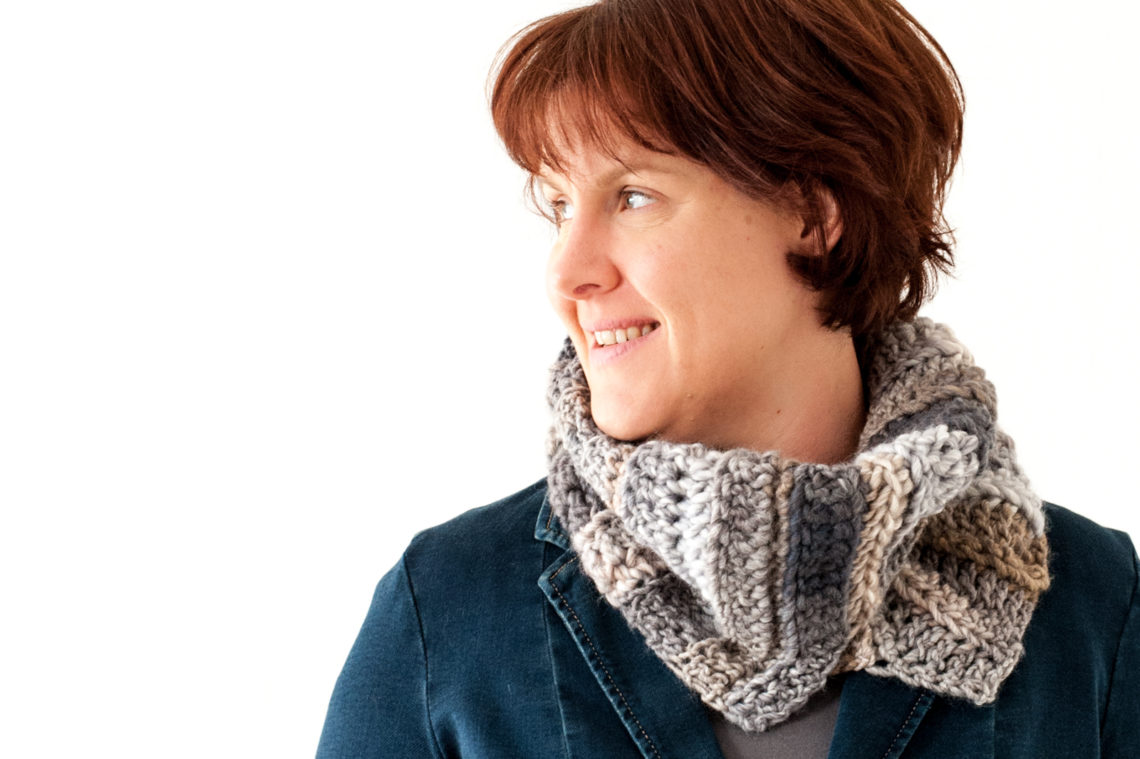A few balls of yarn were lying around… yarn that variegates both in colour and thickness. I love the yarn a lot and was thinking about a project for it. My goal was to let the colours and texture of the yarn be in the spotlight, so no complicated design. The yarn itself provides enough depth on its own. I decided on a cowl with a simple stitch repeat that creates just that bit of texture…
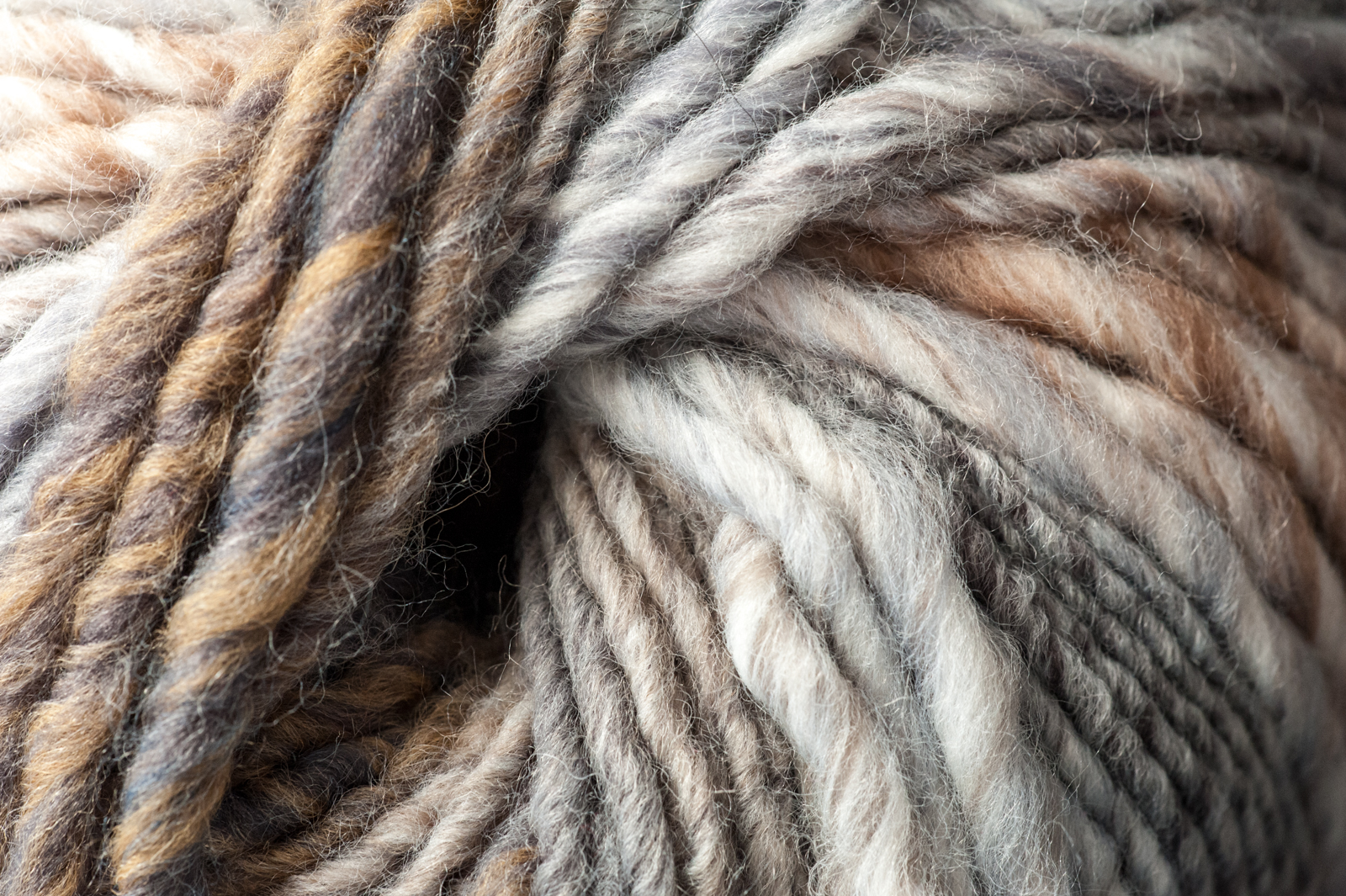
Materials
Yarn
2 balls of Lana Grossa Olympia Classic, colour no. 026, 100g = 100m. I needed approx. 150g for my cowl
The colourway that I used is an older colour of this range, it is still available at some shops though. Each year new, fantastic colours of this yarn are introduced. If looking for a substitute, you can consider Katia Inca, Scheepjes Verona or Durable Chunky.
Hook
Crochet hook 10,0 mm / N/15
Notions
A pair of scissors and a needle
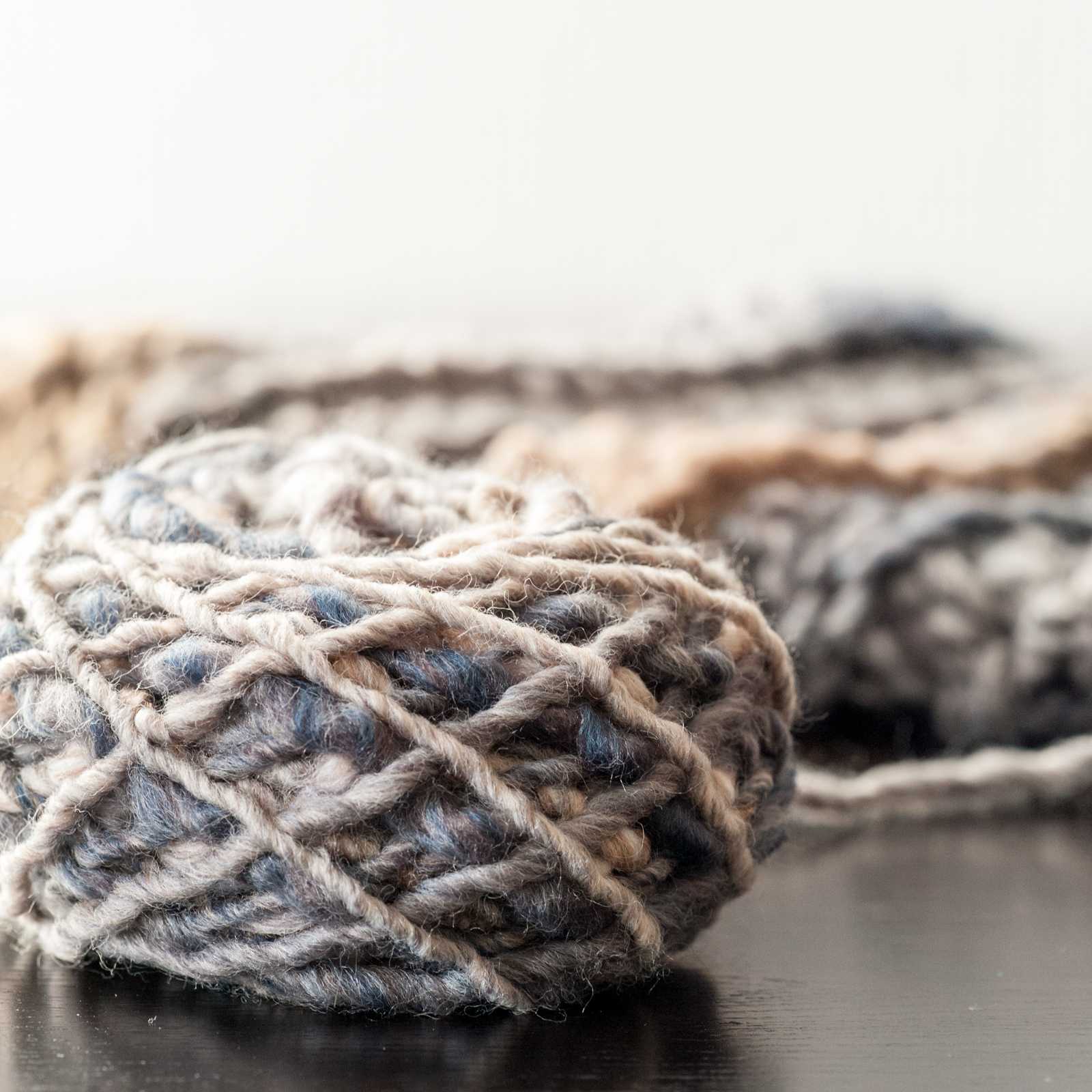
Construction
Shape
The cowl is worked flat and is formed into a tube by closing the seam at the end.
Finished Measurements
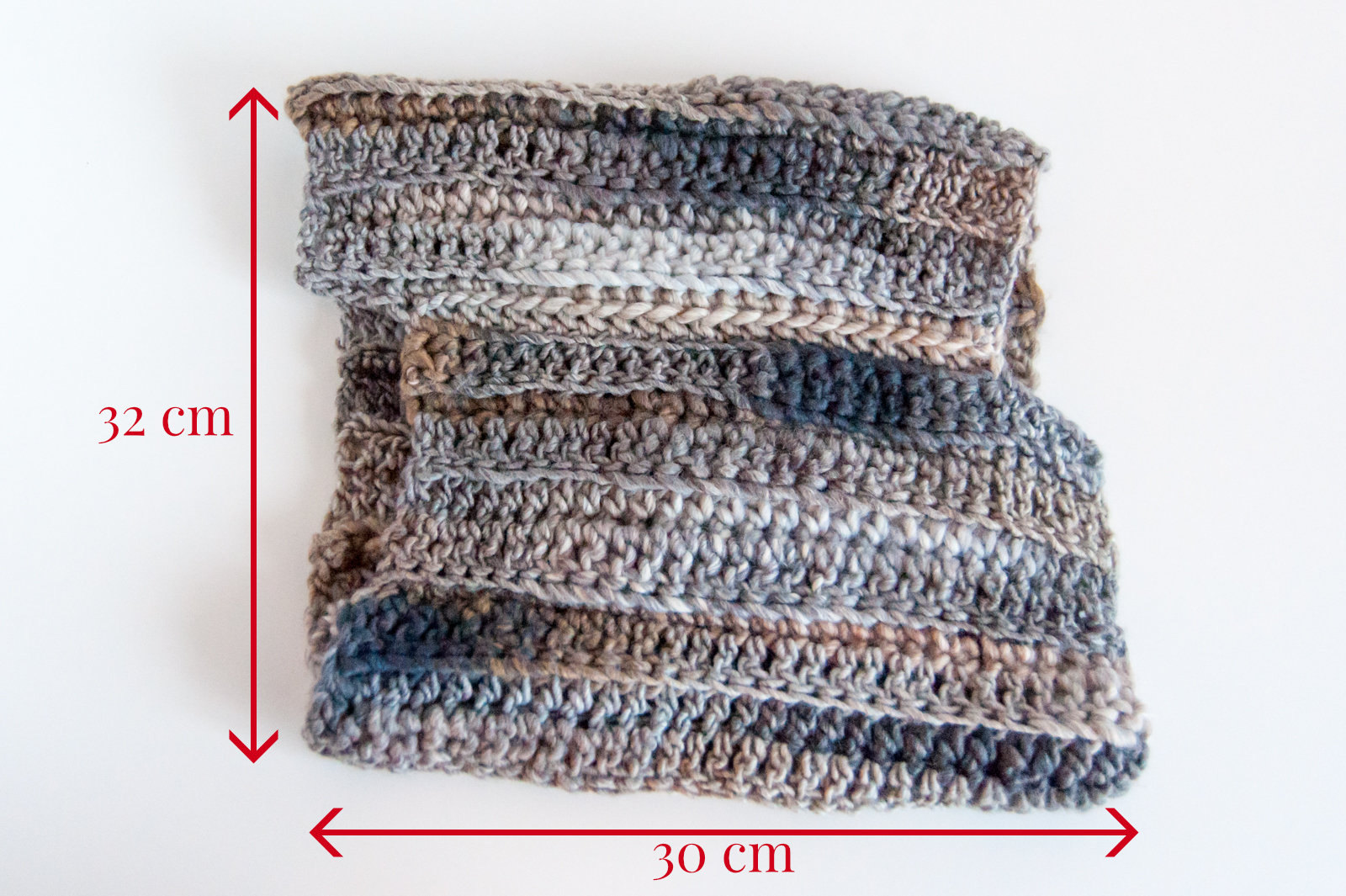
My cowl measures approx. 32cm x 30cm (w x h) when it is unfolded.
Gauge
The gauge is not critical for this pattern. You can adjust the number of stitches and the number of rows to make it fit for you perfectly.
Stitch Library
This pattern is written using US crochet terms.
| Abbreviation | US terms | UK terms |
| Ch | Chain stitch | Chain stitch |
| Sc | Single crochet | Double crochet |
| Hdc | Half double crochet | Half treble crochet |
| Dc | Double crochet | Treble crochet |
| Fdc | Foundation double crochet | Foundation treble crochet |
Special Stitches Explained
I like to start my work with a foundation double crochet (fdc) rather than starting with a number of chains. It makes counting your stitches a lot easier and the foundation double crochet gives you a more stretchy base. Use the link below for instructions:
- Foundation double crochet by Moogly
Additional Notes
- The pattern can easily be adapted to change the size. You can increase or decrease the number of stitches and the number of rows. Try it on before closing the tube to make sure it fits. Don’t make the cowl too loose, it will stretch when you wear it.
- All rows in this pattern are worked in the back loop of the stitches only. This video by Moogly explains it.
- In this pattern, the turning chains do not count as a stitch. They are only made to create the necessary height. That means you make the first stitch of the row in the last stitch of the previous row.
- When you prefer to start your work with a foundation chain, then replace the first row by the following:
- Chain 30, dc in 3rd chain from hook, dc to end, ch1, turn.
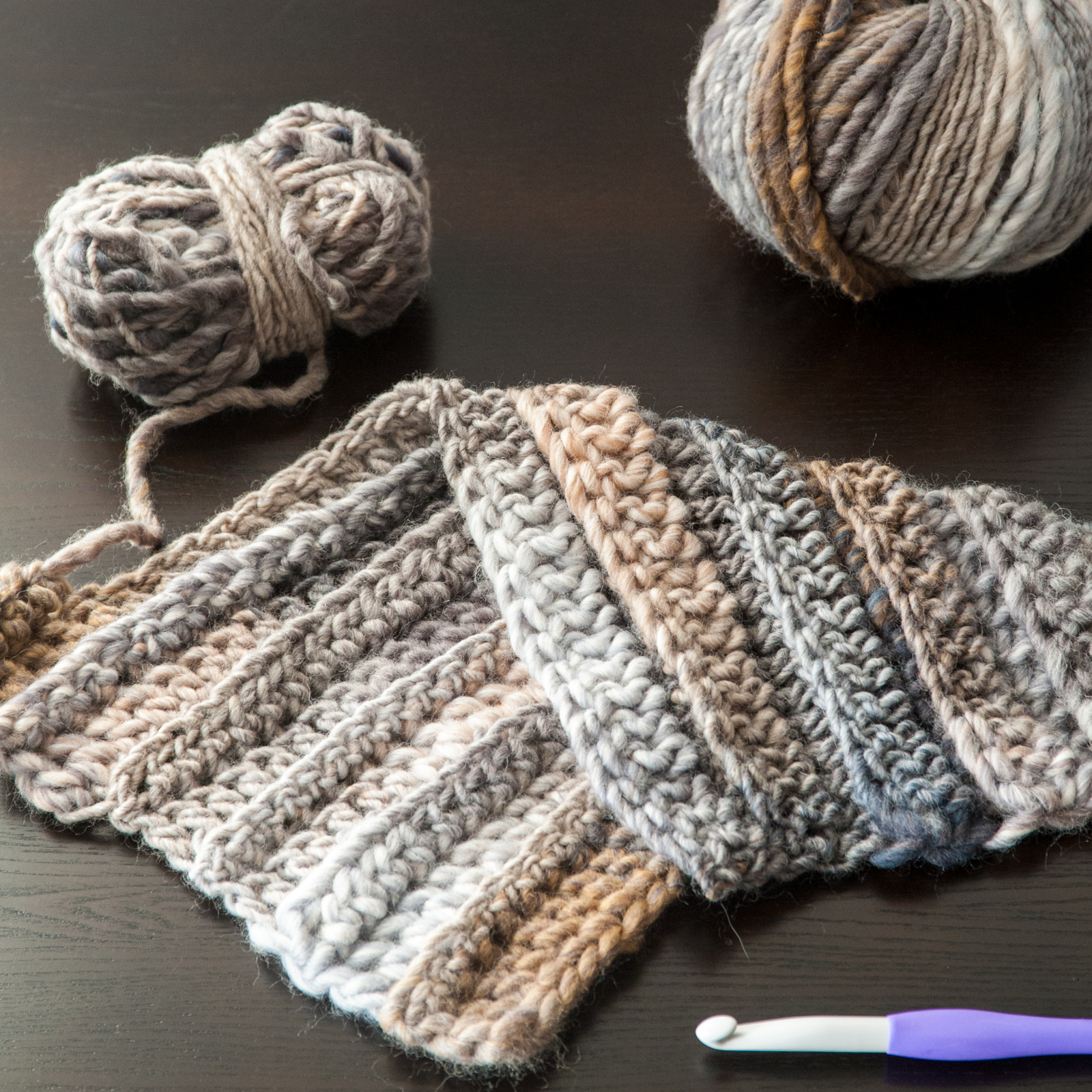
Written Pattern
Row 1: fdc 28, ch1, turn
Row 2: sc in first st, sc to end, ch2, turn
Row 3: dc in first st, dc to end, ch1, turn
Row 4: hdc in first st, hdc to end, ch2, turn
Row 5: dc in first st, dc to end, ch1, turn
Row 6: sc in first st, sc to end, ch2, turn
Rows 7 – 30: repeat rows 3 – 6. Replace the ch2 at the end of row 30 by ch1. Do not cut the yarn.
Finishing
Decide which side you like best and old your piece by bringing the short sides together, the front side is on the inside. The backside of your cowl is facing you.
Lay flat on a table and shift the top part of your crochet piece to the left. You will start in the first stitch of the top part and in the 6th stitch of the bottom part of your work. Close the seam using single crochet and insert your hook under both loops of both parts:

Sc in first st of top part and 6th st of bottom part, sc in each stitch until you reach the last st of bottom part (23 st). Break yarn and sew in your ends.

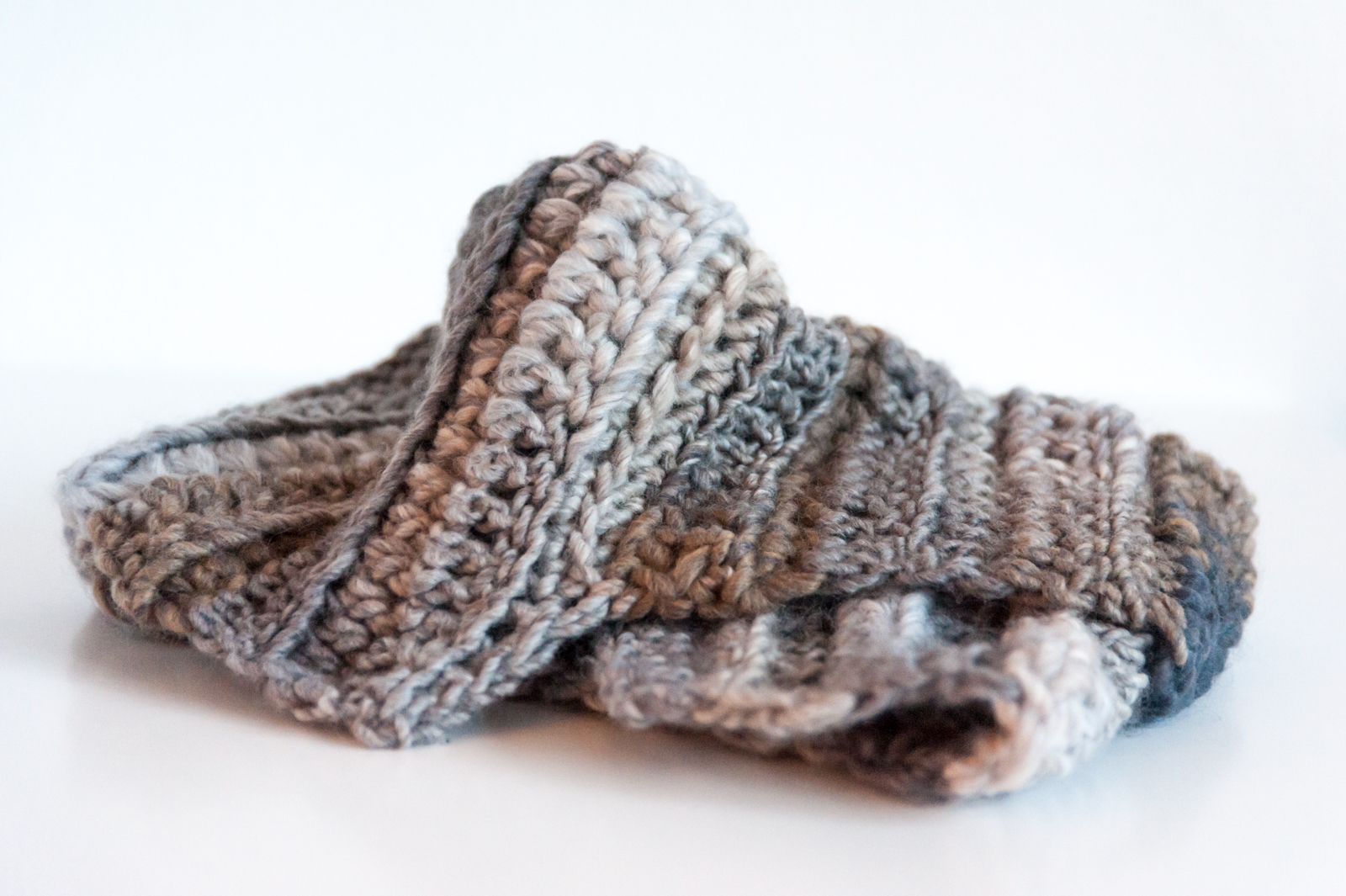
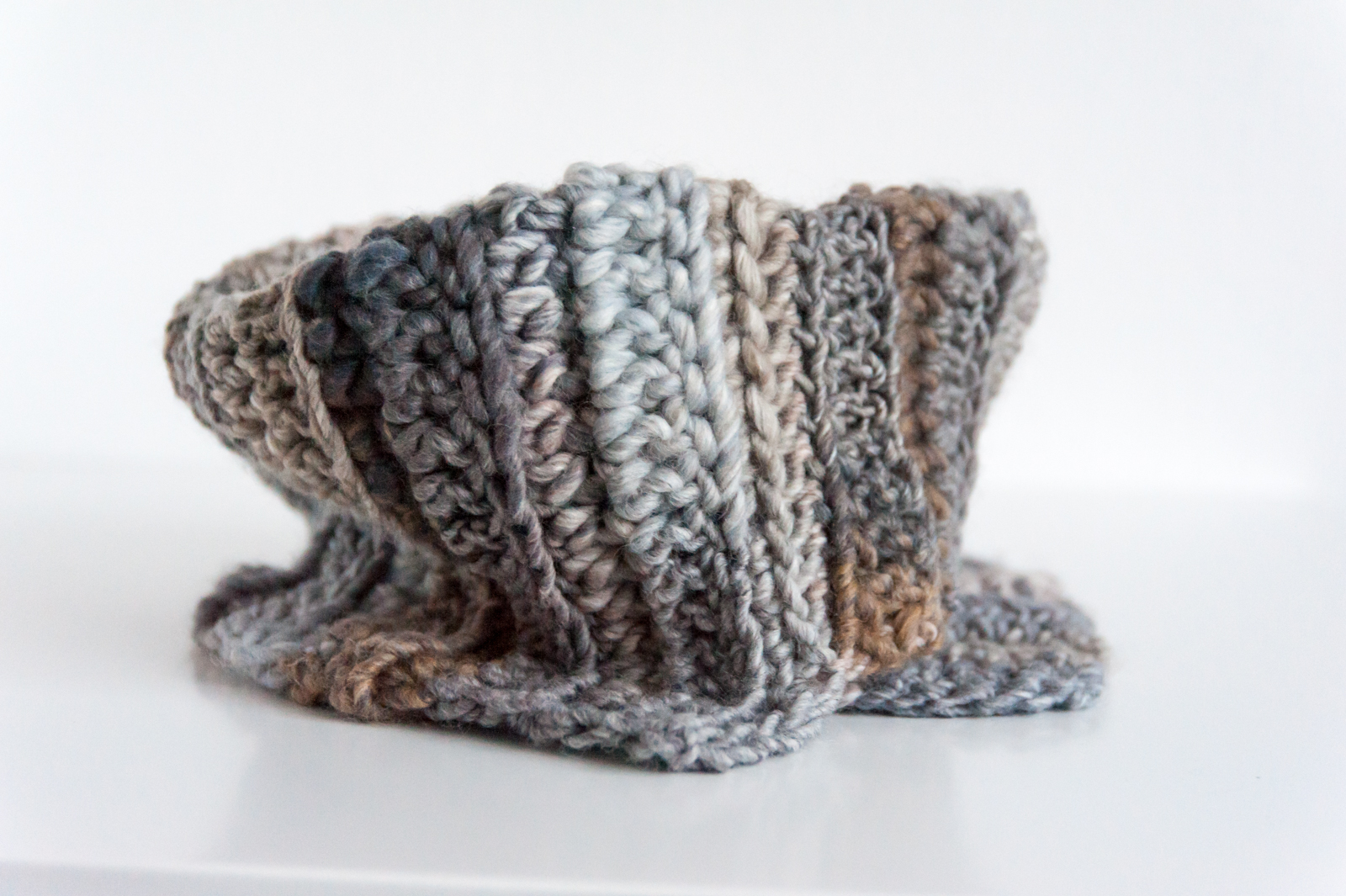
Would you like to show me your creations? Please use #asymmetriccowl and #merinoandtomatoes when sharing them on social media!
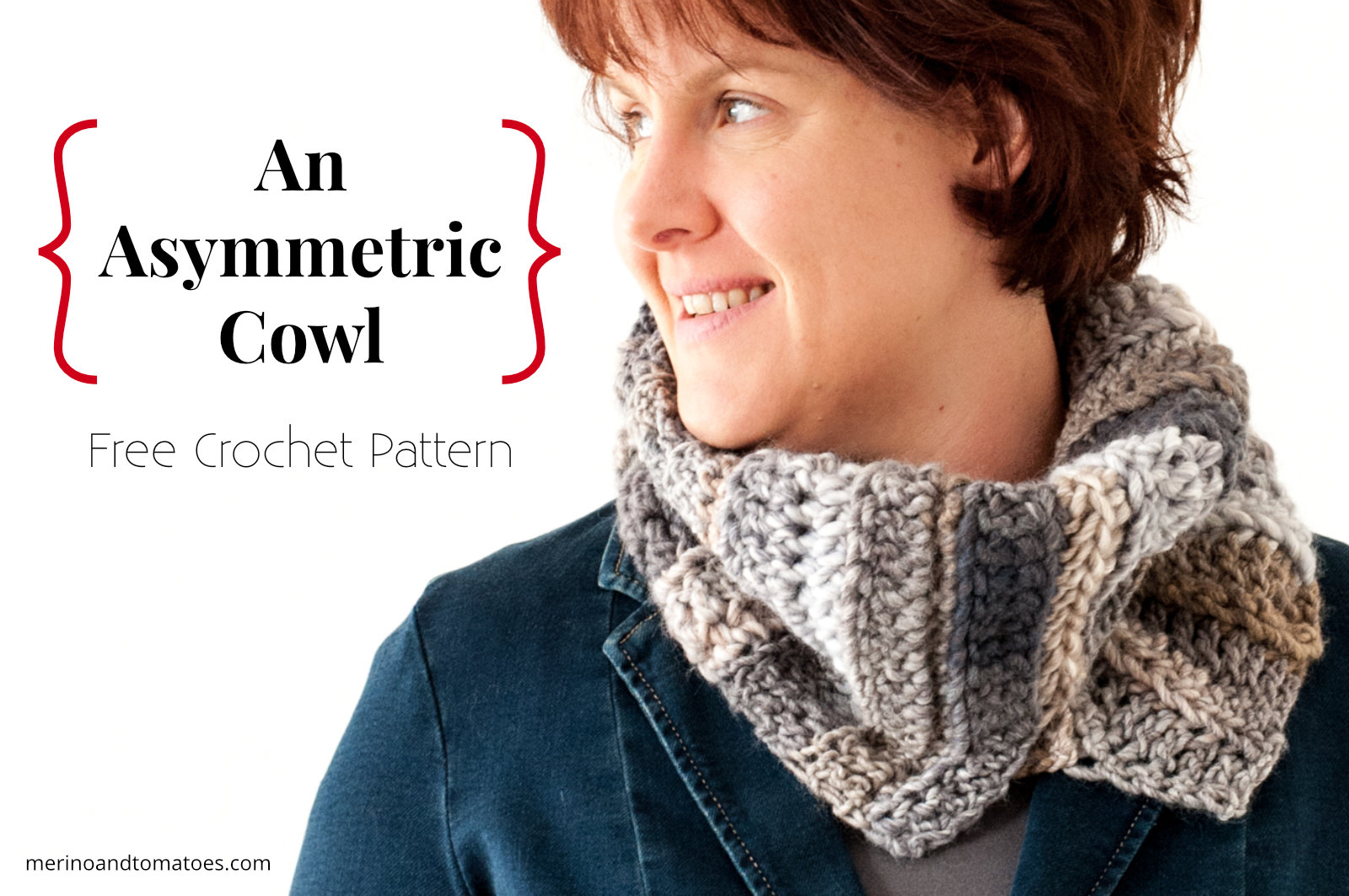
Do you have a question? Don’t hesitate to contact me!
This pattern is copyright protected, read more here.

